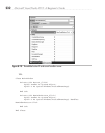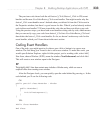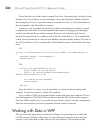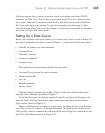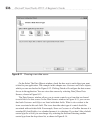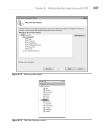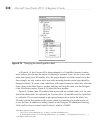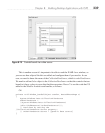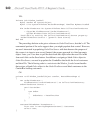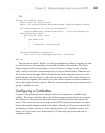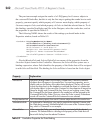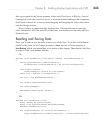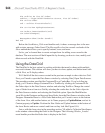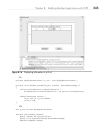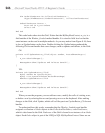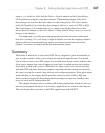
240 Microsoft Visual Studio 2010: A Beginner’s Guide
VB:
Private Sub Window_Loaded(
ByVal sender As System.Object,
ByVal e As System.Windows.RoutedEventArgs) Handles MyBase.Loaded
Dim OrderViewSource As System.Windows.Data.CollectionViewSource
= CType(Me.FindResource("OrderViewSource"),
System.Windows.Data.CollectionViewSource)
'Load data by setting the CollectionViewSource.Source property:
'OrderViewSource.Source = [generic data source]
End Sub
The preceding skeleton code gets a reference to OrderViewSource, but that’s all. The
commented portion of the code suggests how you might populate that control. However,
we aren’t interested in populating OrderViewSource with data because the purpose of
this screen is to insert a new record. Instead, the proper approach is to bind an empty
object. Later, you’ll see how to pull the data from that object after the user fills in the
form and clicks on the Save button. In addition to assigning a blank Order object to
OrderViewSource, we need to populate the ComboBox that holds the list of customers
and their IDs. The following code is a revision to the Window_Loaded event handler
that assigns a blank Order object to the OrderViewSource and binds customers to the
ComboBox holding customers:
C#:
private void Window_Loaded(object sender, RoutedEventArgs e)
{
var orderViewSource =
FindResource("orderViewSource") as CollectionViewSource;
orderViewSource.Source =
new List<Order>
{
new Order
{
OrderDate = DateTime.Now
}
};
customerIDComboBox.ItemsSource =
from cust in new MyShopDataContext().Customers
select cust;
}



